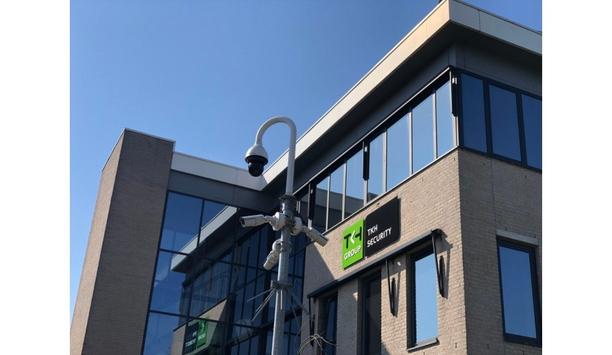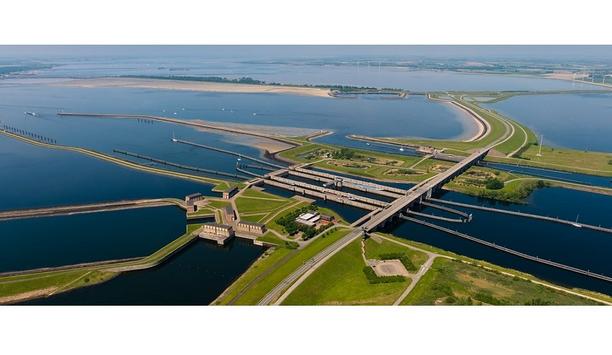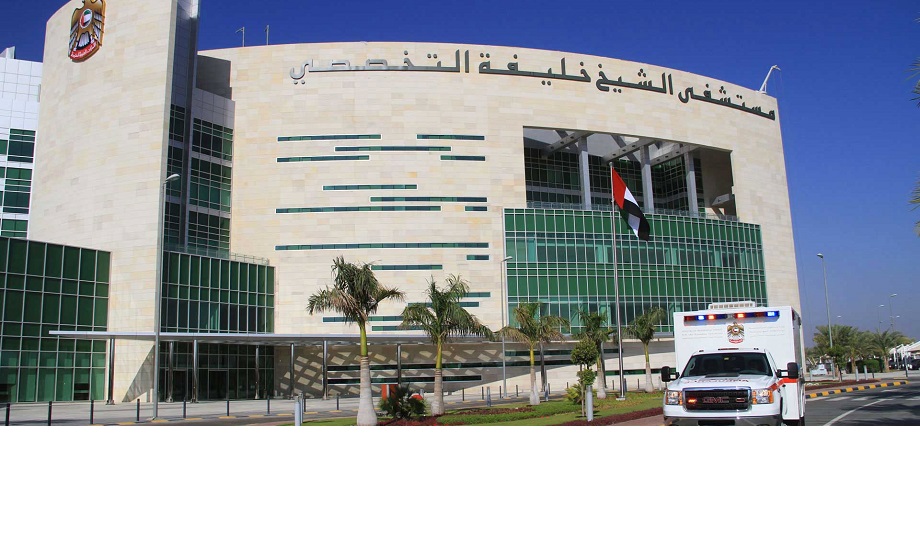Siqura B.V. - Experts & Thought Leaders
Latest Siqura B.V. news & announcements
All Siqura activities will continue under the banner of TKH Security. These renowned companies in video security solutions were both already members of TKH Group NV. The Siqura video security solutions are often sold in combination with the developed security solutions of TKH Security and this complete solution is highly appreciated by their customers worldwide. Therefore, the time has come to group all activities in TKH Security. “By combining all activities, we give our customers more transparency and clarity in what we can offer them. Furthermore, we increase our services. For example, the contact point for all questions and orders, invoices, documentation, support tickets, etc. will be centralised. This will be much more efficient for our customers as well as our employees”, says Timme Grijpink, Managing Director of TKH Security. Site management solutions TKH Security specialises in the development of electronic Security & Site Management Systems The Siqura brand will be retained for the wide product range of Siqura, such as security cameras, mobility cameras, marine cameras, explosion-proof and thermal cameras, IP video encoders, ethernet switches and fibre optic transmitters. This product range is complementary to the TKH Security product range, encompassing security management, video management, parking facility management and asset & site management solutions. With this aggregation of activities TKH Security has offices worldwide in Amsterdam, Gouda and Zoetermeer (the Netherlands), Madrid (Spain), Dubai (UAE), Singapore and Frederick (USA). TKH Security specialises in the development of electronic Security & Site Management Systems. Open architecture integration With over 25 years of experience and by listening to customer needs, the company offers complete innovative solutions for Security Management, Access Control, Video Management, Intrusion Detection, Intercom, Personal Surveillance, Asset & Site Management and Parking Facility Management. The company is always looking for innovative solutions for the market with a focus on creative, flexible and open architecture integration. TKH Security has a strong position in the Benelux and multiple offices all over the world. TKH Security is a member of TKH Group N.V.
The road network is under increasing pressure due to the sheer weight of traffic, and its bridges and water locks are no exception. In view of the importance of free-flowing traffic and the safety of such structures, they undergo continuous modernisation. One such modernisation is CCTV: by incorporating video surveillance into a security system, end-users can monitor and anticipate upon what’s happening at a certain location in real-time. This increases the efficiency and safety of such objects. Video management system Operators are continually fed the latest information through the video management system, allowing them to effectively anticipate any situation that may arise. This makes it possible to guarantee an optimum flow of vehicles and ships and to better respond to changing traffic situations in critical environments. TKH Security is specialised in video management systems in combination with Siqura cameras, thereby meeting the stricter laws and regulations governing the wet infrastructure sector. Motion detection Robin de Neve, International Sales Manager: “At TKH Security, we have been involved in wet infrastructure for many years and therefore know like no other how, in conjunction with installation engineers, to provide support to end users in the challenges they face in the sector. Thanks to the latest compression techniques and dual streaming, motion detection has become very efficient in terms of storage. Among the great advantages to operators is the fact that the system is very user friendly, it records only what is needed and it is exceedingly reliable thanks to failover functionality.” Easy-to-use high tech De Neve goes on to say: “Custom configurations can be made for individual operators, with panels to review images, for instance, control elements for third-party systems, HTML browsers and maps. The system has an open architecture and is API and ONVIF compatible, making installation and integration very easy. Using a powerful macro engine, customers can determine how the system responds given specific situations. Our video surveillance solution is scalable from a few to a few thousand cameras. Thermal cameras detect people on structures in all weather conditions, including rain, fog and low sun. In such cases, a signal is sent automatically to the control room so that operators can immediately respond if necessary.” Cameras with existing cabling Many structures such as bridges and water locks currently still use analogue solutions, and replacing existing cabling to enable an IP solution is often considered to be too expensive. TKH Security has special hybrid cameras that feature both analogue BNC connectors and SFP slots in addition to a regular network connection, making it possible to link them to several SFP modules: the Siqura 920 series. It is therefore not necessary to replace existing cabling, which considerably reduces costs. The hybrid cameras make it possible to use old-fashioned coaxial/analogue networks and still be able to migrate to IP cameras.
Siqura and TKH Security realised a fully integrated surveillance and access control system in the Sheikh Khalifa Central Hospital. This new hospital is located at the eastern edge of the emirate of Fujairah and will provide better 24/7 health services to citizens on the Eastern coast. The hospital consists of 11 specialised departments, a 32-bed emergency ward, a 3-storey rehabilitation building and more than 700 parking spots. Integration of multiple systems This hospital required a complete surveillance solution integrated with healthcare applications. The project combined access control and video management from TKH Security with cameras from Siqura. "We worked closely with our partners to comply with the solution which conforms to the new guidelines in Fujairah” says Tariq Anwer, Sales Director – Middle East & West Asia with Siqura. “The video surveillance component consists of around 700 different Siqura cameras, working with VDG Sense video management software and storage from TKH Security. The iProtect access control system, also from TKH Security manages around 400 doors with card and pin authentication. iProtect security management system is able to flawlessly fulfil the set of complex requirements demanded by this client.” Security management system healthcare facility For Siqura Middle East & West Asia and TKH Security, Sheikh Khalifa Central Hospital in Fujairah is a prestigious project in the healthcare segment. The integration of multiple systems under one roof combined with the integration of healthcare applications provided an extra challenge. Tariq Anwer: “The scope of the project involved an integrated security management system consisting of Siqura cameras, VDG Sense VMS and iProtect access control." "These are all managed at an upper level by iProtect security management system. Among others, some of the following features are implemented: managing visitors on-site and mustering system for emergency evacuation. This is in addition to the integration option with third party systems, for example baby-monitoring.”
Insights & Opinions from thought leaders at Siqura B.V.
Understanding the complexities of the transform matrix In the concluding part of this 3-part review of the H.264 video compression standard, Kate Huber, Peter de Konink and Piet Nieuwets of Siqura discuss the transform, quantisation and entropy encoding - various block-encoding steps following motion estimation. Describing data in the transform matrix In contrast to the motion estimation step, the transform phase in the encoding process is relatively similar in H.264 and the MPEG standards. At this point in encoding, all the residual data collected during motion estimation is described using the Discrete Cosine Transformation (DCT) method. Initially, information from each residual block is depicted as one 16x16 pixel brightness (luma) block and two 8x8 pixel colour (chroma) blocks. These image data blocks are analyzed and replaced by a DCT pattern with corresponding coefficients that precisely represent the original information. This transform process results in a matrix of coefficients reflecting the amount of data to be encoded. So, the fewer matrix values there are and the lower their values, the less residual image data there is. Accordingly, this results in a better image with fewer bits. How transform works is easy to understand if you think about it in terms of modern art. It's quite easy to describe a new painting that is just a canvas covered in solid blue paint. It is, however, much more difficult to tell someone in detail about the intricacies of a Jackson Pollock painting. Similarly, DCT coefficients ideally describe a solid grey block, or a block with little or no residual data. The more coefficients that need to be used, the more residual details there are. Quantisation and the Q value: Controlling the bit rate H.264 quantisation also doesn't differ all that much from MPEG-2/4 quantisation. This step in the video encoding process consists of first dividing the transform coefficients by a dynamic Q value, used to manage the size of the bit stream, and then discarding trivial coefficients in a specified value range by reducing them to zero. view larger image The Q value varies in order to control the bit rate The transform coefficients are initially divided by the Q value, which varies depending how large the bit rate is allowed to be. A higher Q value results in lower coefficients and fewer bits, but it also diminishes the quality of the image. In scalar quantisation, values within a predetermined range around zero are deemed inconsequential and are therefore reduced to zero. This lowers the bit rate without necessarily impacting the perceived quality of the image. Both the transform and quantisation stages depend on an adept motion estimation process. The advancements H.264 encoding makes in motion estimation are what, in the end, lower the residual image data and allow high quality images to be transformed and quantised to coefficients nearing zero. Therefore, improvements in motion estimation are what ultimately allow better video quality at a lower bit rate. However, H.264 encoding includes additional developments that augment the effectiveness of this streaming standard. view larger imageQuantisation condenses a value range of insignificant transform coefficients by reducing them to zero Recognising and reducing data repetitionThe next step in block-based encoding is entropy encoding. At this point, data is prepared for transmission in such a way that it can be reconstructed in its entirety by the decoder. This is also known as lossless encoding. Entropy encoding is carried out with the help of a variable length encoder (VLC), which condenses the bit rate by recognising frequently recurring data patterns and replacing them with simplified instructions, or codewords.In MPEG-2/4, the VLC sends every value in the quantised transform matrix to the decoder. H.264 alternatively offers more varied and advanced entropy encoder options in two types of VLCs: the Context-Adaptive Variable-Length Codes (CAVLC) and the Context Based Arithmetic Coding (CABAC). While CAVLC only compresses data for the quantised transform coefficients, CABAC compresses all data streamed to the decoder into codewords. view larger image Variable-length encoders condense recurring data into codewords H.264 VLCs ultimately make streaming redundant data more efficient even though they increase the processing power requirements. CAVLC and CABAC reduce the bit rate by adapting to repeatedly received data sequences when that is statistically proven to be more efficient. So, knowing how and when to implement a particular VLC is just another challenge put to H.264 engineers. A simple example may help to explain how CAVLC works. Suppose that every time you said, "I'd like a cup of coffee", you received one, and so, after a while, you started just saying "I'd like". While this is a very easy way to satiate your coffee craving, should you ever just want a glass of water, you would need to explain yourself without saying "I'd like". CAVLC works similarly. If the entropy encoder receives recurring data patterns, it replaces them with a codeword, like 1. However, other sequences then need to be described without using a 1. This can sometimes lead to longer codewords in unique data streams.Blurring block borders in the video encoding processOne problem plaguing MPEG-2/4 encoders is errors in the image data caused by macroblock edges that are incongruous with adjacent blocks. This is not only disruptive to the viewer but it can also hinder motion estimation.While these block-edge blunders are easily evened out with a deblocking filter, MPEG-2/4 only applies this deblocking filter in the decoding process. Although the deblocking filter more or less erases blocky edges for the viewer, the original distortions still impede motion estimation during encoding because the reference frames retain the block-edge errors. This ultimately reduces the efficiency of residual data recognition and, therefore, it also diminishes the efficiency of the encoder in general.H.264 provides a solution for both the visual effects of block edges as well as the implications they can have for motion estimation by applying a deblocking filter in the encoding process, also known as in-loop deblocking. This allows motion estimation to use reconstructed frames when searching reference frames rather than the initial frames from the camera, thereby reducing the discovered residual differences. In loop deblocking thus further facilitates adroit motion estimation in H.264 encoding. Kate HuberTechnical WriterSiqura Peter de KoninkProduct Line Manager, Codec/AnalyticsSiqura Piet NieuwetsSenior Hardware EngineerSiqura
Image quality of objects in motion is greater with H.264 technology In the first part of this three part series, the authors described the H.264 video compression standard including its history. In part two, the authors discuss motion estimation, the phase during which H.264 really distinguishes itself from other MPEG standards. Differentiating from other MPEG standards: Adapting raster block sizes for more detailed images H.264 distinguishes itself from the other MPEG standards mainly during motion estimation and its two components, motion compensation and motion vectors. Motion estimation is the process by which image information is assessed for similarities that can be reused in subsequent frames. This ultimately reduces the amount of data that is encoded and therefore reduces the bit rate.Initially, an H.264 or MPEG-2/4 encoder receives either frames (progressive video) or fields (interlaced video) from a camera or other video source. At the start of motion estimation, these images are divided up in a raster of macroblocks that are organised into arbitrarily shaped slices. The raster is one aspect that sets H.264 apart. While MPEG-2/4 separate input frames or fields into a fixed raster of blocks containing 8x8 pixels, H.264 allows block sizes to vary. An H.264 encoder's raster can therefore include block sizes of 16x16, 16x8, 8x16, 8x8, 8x4, 4x8, or 4x4 pixels. So, less detailed areas, such as a clear blue sky, may use a 16x16 block while more detailed areas, such as the edges of moving vehicles, will probably use the smaller, 4x4 block size. H.264 divides macroblocks up into a raster of mixed block sizes Adjusting the block size as necessary not only makes H.264 encoding more efficient but it also improves the perceived quality of the image. Fixed gridlines are more jarring to the eye than jumbled blocks or chaotic patterns. As a result, most would agree that H.264 also noticeably improves the apparent video view.Deciding which block size to use and where is not something that is defined in the H.264 standard. This allows engineers to creatively compete for the most accurate and efficient motion estimation process. Consequently, a proficient motion estimation process can be what either makes or breaks an H.264 encoder.Motion compensation and reuse of image dataAnother aspect of motion estimation is the process of motion compensation, during which the difference or change between the macroblocks is calculated. Each slice is examined in raster order with either intra- or inter-prediction.Intra-prediction is when I blocks in I slices are assessed according to the image data found within the current slice. When P blocks in P slices are examined, image data found in the current and previous slices is referenced in an inter-prediction scan. Intra-prediction uses the current frame as a reference. Inter-prediction references previous frames in addition to the current frame The discrepancy between image data determined during motion compensation is used to produce a block containing residual information. This residue block is what is encoded and image data from previous frames is reused. As a result, only the dissimilarities between blocks are encoded and redundant aspects of images are recycled, thus reducing the bit rate. Whereas MPEG-2/4 consult just one reference frame, H.264 has a number of previously encoded frames that it can check. This provides H.264 with the potential to reprocess even more image data than the preceding MPEG standards and, as a result, diminish the bit rate by an even greater degree, although this also increases the necessary processing power. Data precision down to a quarter pixelThe direction in which reused pixels should shift in the following frame or field (either vertically or horizontally) is identified through motion vectors. Motion vectors indicate how best to situate data and are therefore a crucial factor in effectively reusing image information. H.264 distinguishes itself from the other MPEG standards mainly during motion estimation MPEG-2 and MPEG-4 SP (Simple Profile) generate motion vectors using half-pixel resolution. This means that half pixel increments are used to accurately rearrange data. H.264 goes a step further, subdividing macroblocks and creating motion vectors that can reposition image data with the precision of a quarter of a pixel. This exactness employed by H.264 encoders further reduces the amount of data needing to be encoded, but it also increases the number of pixel positions 16-fold. As a result, H.264 encoders only average or extrapolate motion vectors for areas where there is a lot of motion or the data is most detailed.Estimating H.264 encoder excellenceMotion compensation and the creation of motion vectors transpire concurrently in motion estimation to select the best block size, calculate the difference, and generate motion vectors for every quarter pixel to reduce the residual difference between image frames, ultimately making H.264 encoders extremely efficient.Decreasing the bit stream comes at a cost, however. It results in an increased computational complexity and, therefore, higher processing power requirements. Engineers have to carefully implement statistical mechanisms to analyze the data flow and determine the most efficient way of using the tools and enhancements made possible with H.264. Therefore, an encoder's quality can be judged by the competence of its realisation of motion estimation. Kate HuberTechnical WriterOptelecom-NKF Peter de KoninkProduct Line Manager, Codec/AnalyticsOptelecom-NKF Piet NieuwetsSenior Hardware EngineerOptelecom-NKF
H.264 has become the compression standard of choice in the security industry The rising popularity of the H.264 video compression standard has established H.264 as ‘the buzzword' within the video surveillance industry. With all this talk of the possible enhancements brought to the fore by H.264, Kate Huber, Peter de konik and Piet Nieuwets of Optelecom-NKF present the true benefits and shortcomings of this popular standard in the first of a three-part review.H.264 takes the world of video streaming by stormA Saturday night in front of the TV maybe doesn't make you think of video streaming standards any more than watching a bridge go up automatically or getting caught on a traffic camera for running a red light do. But video streaming is what makes it possible to safely open bridges from a control center and secure the streets as much as it is what lets you put your feet up and forget the world for awhile with your favorite film. Since 1995, the video streaming standard of choice for TV broadcasting and DVD video has been MPEG 2. Its successor, MPEG-4 part 2, expanded the possibilities of MPEG-2 in 1998, creating a streaming standard that has largely been adopted by the computer industry. But the buzzword in the world of video streaming these days is H.264, a.k.a. MPEG-4 part 10. Everybody developing or distributing codecs either already supports it or will very soon. But just what exactly is H.264 and what is so special about it? Creating a new video compression standard- a brief history of H.264 View larger imageH.264 is a product of international cooperation Simply said, H.264 is a video compression standard. It is a product of the cooperation between the the International Organization for Standardization (ISO), the International Electrotechnical Commission (IEC), and the International Telecommunication Union - Telecommunication Standardization Sector (ITU-T) which have been working together to define the basic criteria for streaming technologies. Members of ISO and IEC formed a workgroup in May of 1988 called the Moving Picture Experts Group (MPEG), which is known for the MPEG-2 and MPEG-4 part 2 video and audio compression and transmission standards, published in the 1990s. In 2001, MPEG and a subgroup of ITU-T, the Video Coding Experts Group (VCEG), founded a new workgroup called the Joint Video Team (JVT). Basing their work on the MPEG 2/4 standards, JVT created the H.264 video compression standard, first published in 2003.A flexible video compression standardThe H.264 video compression standard sets the requirements for formatting compressed video so as to provide improved video quality at lower bit rates than preceding standards. However, it doesn't actually specify how codecs should go about encoding video streams. It only defines how decoders should function and the tools and mechanisms that may be used, giving this standard unparalleled flexibility and allowing developers to contend for the most efficient encoding. Still, H.264 isn't all that different from its compression predecessors. Similarly to MPEG-2/4, developers have to select a particular profile defined for specific uses. In the case of H.264, there are three: Baseline, Main, and Extended. The Baseline Profile is optimised for videotelephony, videoconferencing, wireless communications, and CCTV installations since it is less demanding on the decoder. The Main Profile works better in television broadcasting and video storage, while more exacting applications that are less concerned with processing power requirements can make use of the Extended Profile. Like MPEG-2/4 before it, H.264 also uses block-based encoding. This means that H.264 employs motion estimation, transform, quantisation, and entropy encoding to compress video, and it inverses these processes to decode image data for viewing. view larger imageThe steps involved in block-based encoding A superior video compression standard? The H.264 video compression standard sets the requirements for formatting compressed video so as to provide improved video quality at lower bit rates In conclusion, H.264 is based on the MPEG-2/4 video compression standards and similarly goes through the block-based encoding steps of motion estimation, transform, quantisation, and entropy encoding. However, H.264 reveals itself as the up-and-coming superior standard through its streamlining of motion estimation with variable block sizes, quarter pixel resolution, and in loop deblocking as well as its advancements in variable-length encoding.Yet, most would agree that MPEG-2/4 have been working great for years, and H.264 does require a lot of extra processing power. So why bother with this new video compression standard? It isn't as though H.264 will suddenly make video streaming a Saturday night on the couch.Still, it is the finest and most efficient video streaming standard to date. That's why H.264 is already expanding into a vast array of SD and HD video streaming applications from home entertainment to surveillance systems. Besides getting better quality video at a lower bit rate, the flexibility of the H.264 compression standard allows engineers to tailor H.264 encoders to specific applications in a way that MPEG-2/4 can't possibly compete with. Moreover, a quality H.264 encoder with competent motion estimation will provide preeminent encoding. So, even if an upgrade may add a few extra costs, implementing H.264 will save you a significant amount of streaming stress in the long run. Kate HuberTechnical WriterOptelecom-NKF Peter de KoninkProduct Line Manager, Codec/AnalyticsOptelecom-NKF Piet NieuwetsSenior Hardware EngineerOptelecom-NKF
One system, one card
DownloadAligning physical and cyber defence for total protection
DownloadUnderstanding AI-powered video analytics
DownloadEnhancing physical access control using a self-service model
DownloadHow to implement a physical security strategy with privacy in mind
Download





















